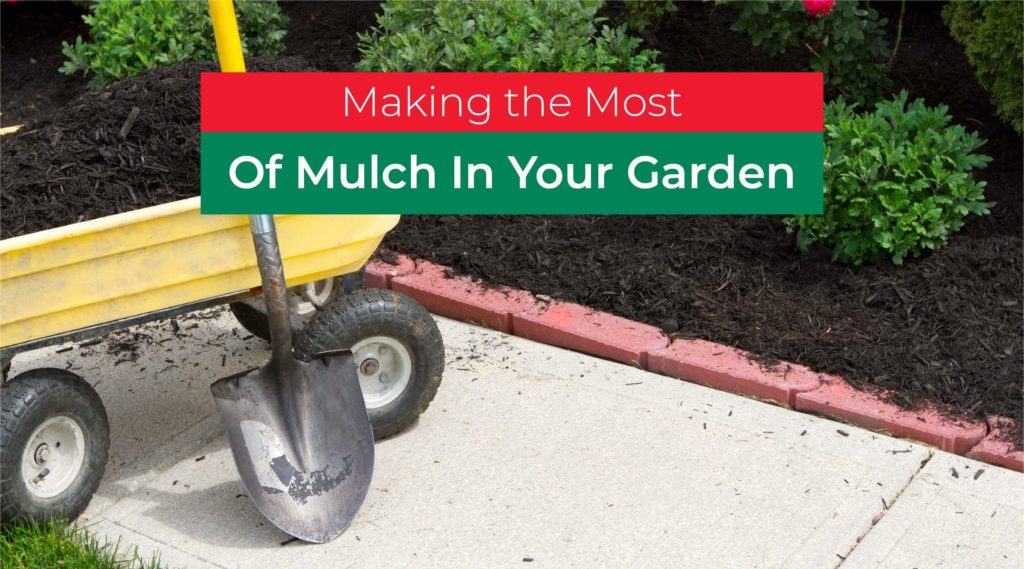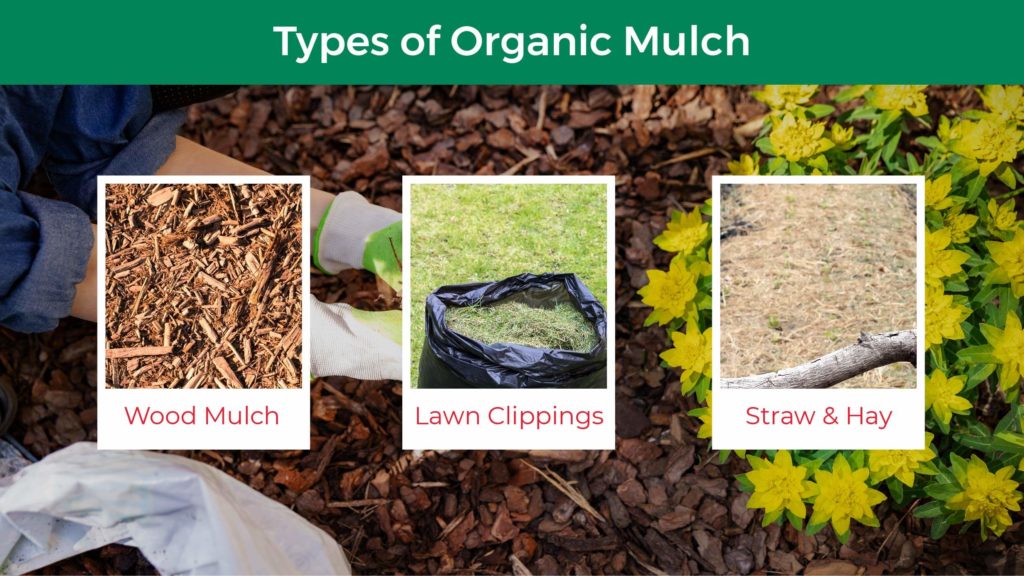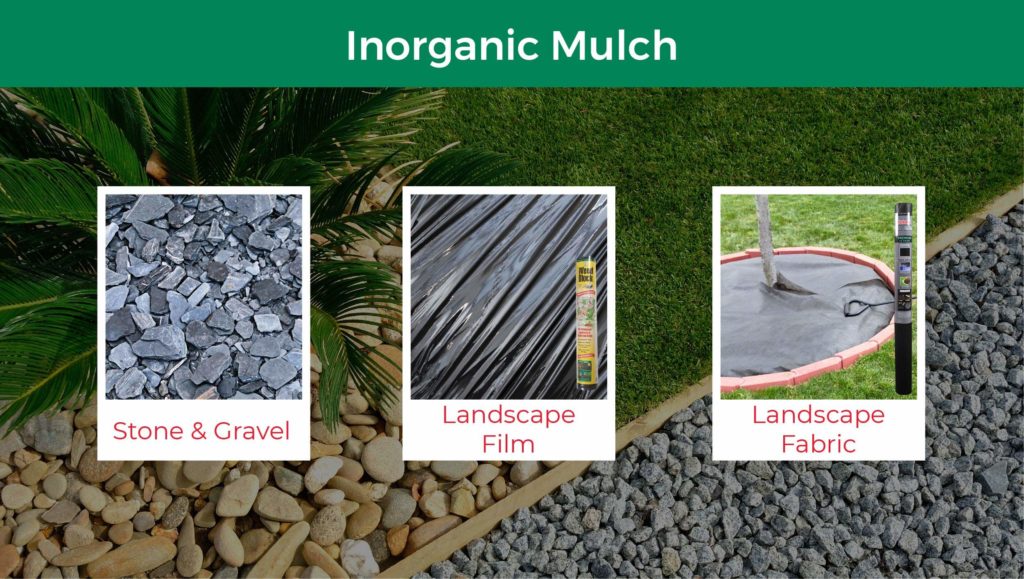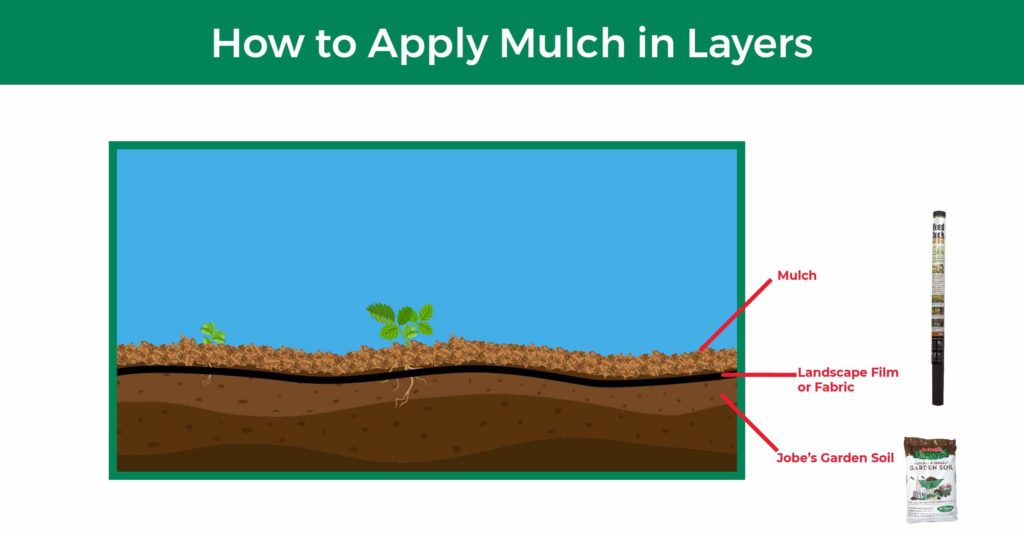Mulch. It’s a staple of gardening and landscaping.
If you’re an avid gardener, you’ve likely put down a substantial bed of mulch in your garden or landscaping at some point. It creates an eye-catching contrast with leafy greens and bright flowers. Mulch is also great for keeping weeds out because it provides a layer of protection from the sun, keeping the leaves of invasive plants from drinking in that energy. In addition to its aesthetic value and the benefit of weed prevention, it’s also valuable for growing the plants you want to see thrive. It helps insulate plant roots, allowing them to retain moisture from the soil.
So how does mulch work? What kind of mulch should you use, and how should it be applied?
What Kinds of Mulch are There?
There are different kinds of mulch, and these types have different applications and benefits. The mulch you choose is largely determined by the plants you want to grow, the landscape aesthetic you want, and your budget for your garden or landscape project. There are two primary types of mulch: organic and inorganic.
What is Organic Mulch?
Organic mulch is created from living (or previously living) materials, such as tree bark, newspaper, grass clippings, and shredded leaves. It’s a great, economical option because it’s widely available, costs less than other forms of mulch, and generally spreads pretty easily. One of the other benefits of organic mulch is that as the materials break down and continue to decompose, nutrients move into the soil, providing your plants some additional growing potential.
Wood Mulch
One of the most common types of mulch, shredded mulch, is used in landscaping and gardens because it’s not only attractive, but also easy to purchase at most home improvement and garden stores. In many cases, mulch conserves water, controls weeds, and keeps soil from eroding. Spreading wood mulch is also easy because it’s simple to transport. Finally, because it’s an organic material, wood mulch will eventually break down and restore nutrients to the soil.
Mulch can be made from different types of woods, including cedar and cypress. These mulches can act as natural pest repellents for your garden. In addition, colored mulches are available to give your garden a clean, uniform look. This mulch is more expensive than others, however, and the dyes will eventually fade in the sun.
Whichever mulch you decide to use, be sure to pay attention to the instructions on the bag and research what mulches work well with your chosen plants.
Grass Clippings
Grass clippings from your lawn are a great form of organic mulch because they’re generally always available during the summer and are rich in nitrogen. They’re a natural fertilizer that works exceptionally well for vegetable gardens. One of the best places to utilize grass clippings, however, is in your yard; leaving them spread out over the lawn will help fertilize the grass and – with adequate, regular watering – keep your lawn healthy all summer long.
Shredded Leaves
Shredded leaves are another plentiful, cheap option for mulch (provided you have trees on your property). A lawnmower with a bagger can make short work of leaves that have fallen in autumn or early spring, allowing you to bag and then spread on your garden or flower beds. In addition, shredded leaves can be mulched into the lawn itself, allowing them to break down and provide vital nutrients (and a kick-start) to your yard’s spring growing season.
Other Types of Organic Mulch
In addition to these types of mulch, other organic methods are possible, including:
- Straw or hay
- Newspapers
- Wood bark
- Wood chips
Not all mulch types are suited to every garden, so it’s important to understand how the mulch will react to moisture and how it will break down; wood chips, for example, do not do well in annual flower gardens. They don’t break down easily and will get in the way when it comes time to dig holes to plant in the following years.
Inorganic Mulch
Unlike organic mulch, inorganic mulch is made from materials that are manufactured (fabrics and plastics) or other natural formations (like rocks and gravel). They do not generally break down, and because they are not organic, they will not provide nutrients to the soil or plants they surround. However, they still provide vital benefits.
Stone/Gravel
Stone and gravel are great, attractive options for flower beds and landscaping. They do a really great job of keeping weeds from growing. In addition to being visually pleasing, there’s just such a wide variety of options available, from river rock to pea gravel to crushed brick. Because these mulches don’t break down, they generally do not need to be replaced as often as other organic mulches.
Of course, there are a few downsides. Stone and gravel are costly to use, especially for large projects that could require equipment rentals to haul, move, and spread the material. In addition, rocks and stones that make their way into your lawn could cause property damage if they’re thrown by a lawnmower.
Landscape Film
Landscape film helps trap heat to warm the soil, which is important for vegetable or fruit gardens where crops or fruits grow on the vine; strawberries and tomatoes in particular can thrive when plastic is applied. Unlike other mulches, landscape film does not allow moisture to permeate, so your irrigation method should be a drip hose or soaker hose laid under the plastic but on top of the soil surface. Landscape plastic is also a great way to block weeds, but it does not work well with shrubs – air and moisture can’t penetrate to the shallow roots. If you’re planning to mulch around trees or shrubs, stick to organic mulch.
Landscaping Fabric
Landscape fabric’s main purpose is to help prevent the growth and spread of weeds in your garden or flower bed. Generally speaking, it is black and permeable to allow water and air to get to the soil while also keeping weeds from sprouting. Landscape fabrics do degrade after being exposed to light, so covering them with a secondary mulch is important. Also, they’re not much to look at, so you’ll want to do that anyway. In addition, sometimes landscape fabrics can get caught in the roots of plants like shrubs, making it difficult to remove.
How to Apply Mulch
Depending on the type of mulch you want to use, application methods will vary. For example, it’s simple to spread a wood mulch over your flower bed or landscaping by measuring the amount you’ll need – on average a four- to six-inch layer of mulch can stop weeds completely – and dumping the bags out, then raking. Plastic and fabric can require staples or stakes to hold it down. Rocks will need to be hauled to the site, spread out, and leveled.
Many gardeners choose to combine mulch types to great effect, especially in decorative landscaping where the presence of weeds can mar the aesthetics. By using multiple mulches, you can protect your garden from weeds and encourage the desired plants, vegetables, and flowers to grow and thrive.
A great way to get started with mulch application is to test your soil and use amendments to create the desired growing conditions for your plants. Once these are added, you can put down a great landscape fabric like our natural Weed Block® or PowerGrid® products to help prevent weeds from growing up through the dirt.
After cutting the appropriate holes in the fabric and planting your plants, add your chosen “top” mulch, such as shredded wood mulch or rock. Be sure to use a one- to two-inch layer of this top mulch. Add too much and the mulch itself will become a growing medium for seeds dropped by birds and the wind.
After that, simply water and fertilize your garden as necessary! With mulch and weed blocking elements in place, you can focus on the enjoyment of your garden without worrying about constant maintenance.
Mulching: Key for Healthy Gardens and More
Use mulch to create an attractive landscape project, protect your garden from weeds, and to encourage healthy lawn growth. Whether you’re a novice gardener or a seasoned pro, there’s a mulch technique and material out there to meet your needs. When the time comes to step up your gardening game, Jobe’s is there with a full line of soil, garden, and fertilizing products.



